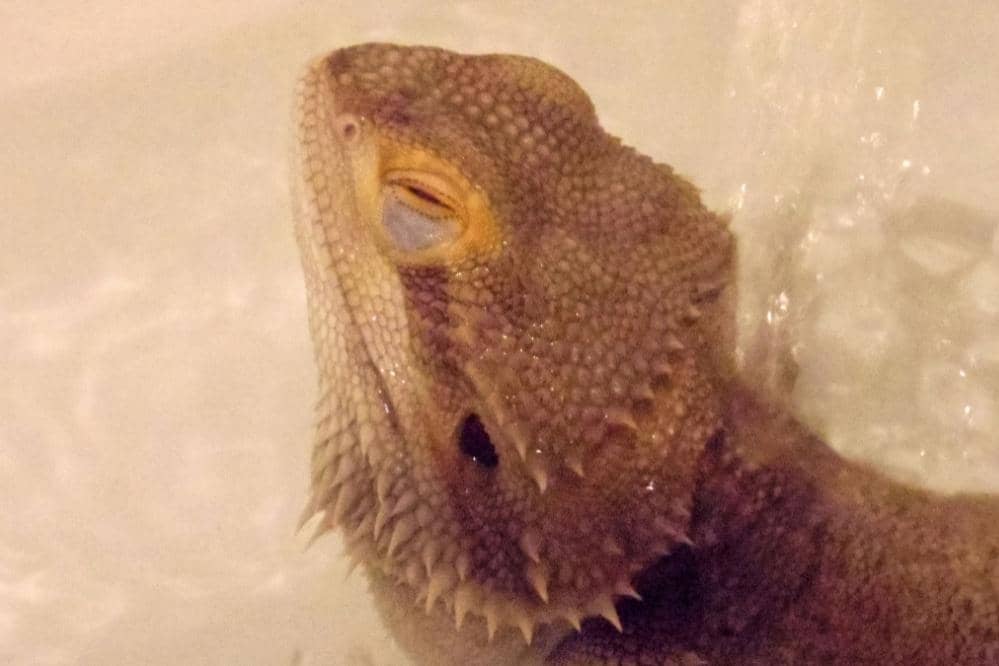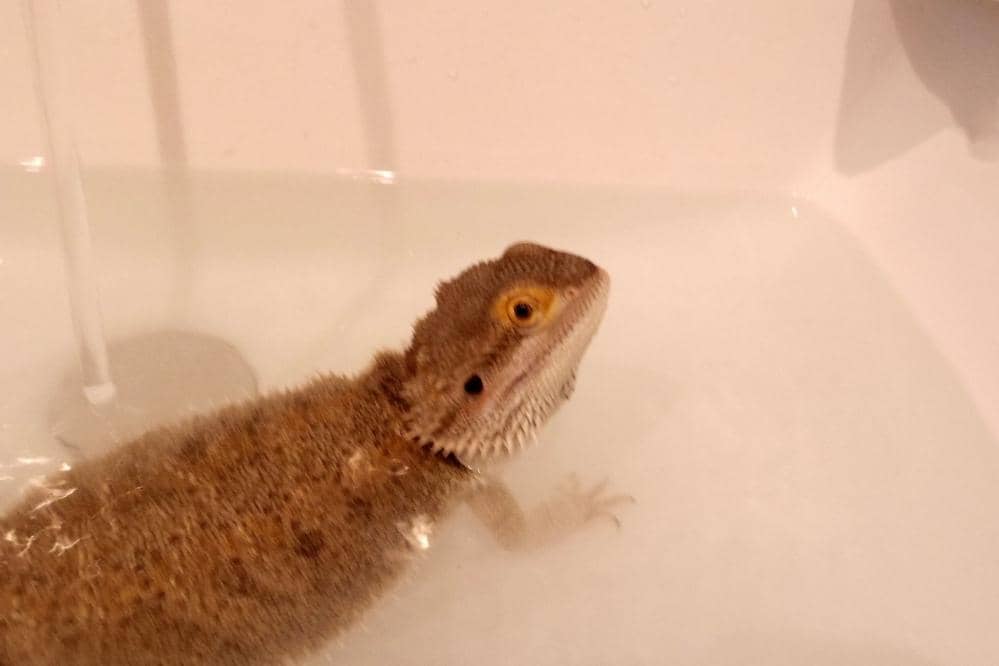While searching about how you manage your bearded dragon well and keep it happy, you frequently may have come across the words like “bathing is good for bearded dragons.” While reading such lines, it’s natural to wonder, “can I bathe my bearded dragon with tap water?” or do I need to use bottled or treated water? The question can be answered both ways “YES” And “No.”
“YES,” you can bathe your bearded friend using tap water if the water in your area is cleaned using different purification techniques.
“NO” because in most areas, you are not sure what is present in the tap water and what concentration. So to be on the safer side, it’s good to avoid using tap water to bathe your bearded dragon. This is because bearded dragons can drink water during bathing, and in most places, tap water often has different kinds of additives or chemicals dissolved in it. For example, fluoride, chlorine, lead, Bromoform, Bromodichloromethane, Chloroform, and Hexavalent Chromium are some elements commonly found in tap water, and some of them are carcinogenic as well.
Why Do Bearded Dragons Need Bath?
Though regular bath is beneficial in many ways for beardies, some bearded dragons may not like baths too often. Still, under some circumstances giving a warm bath is necessary to help your beardie and ensure its health. So let’s see how regular bathing can benefit your bearded dragon.
- Bathing helps maintain general body hygiene and get rid of different kinds of germs and fungi, particularly if the beardie likes to scurry through his feces.
- While bathing, the beardie’s skin gets the necessary moisture and doesn’t get dried. An overly dried skin is more prone to different infections.
- The most crucial benefit of bathing is that it helps the bearded dragon to get necessary hydration. It is especially crucial for beardies, which are not inclined to drink from a water bowl because of their wild instinct to drink from natural sources. As a result, such beardies are more prone to dehydration.
- If your bearded dragon is shedding, bathing can help remove the dried and stuck skin flaps by softening them, Thus making your beardie comfortable.
- A warm bath can also help your bearded dragon to alleviate constipation.
- Above all, bathing provides an opportunity to have fun together, thus strengthening your bond with your bearded friend.
How Frequently & How Long Should I Bathe My Bearded Dragon?
The answer depends on the personality of your bearded dragon, whether he enjoys bathing or not. However, 2-3 baths (15-20 minutes long) are usually enough to ensure your bearded friend’s hygiene and hydration. You can increase the frequency and timing of bathing if your bearded dragon enjoys this activity. However, one bath in a week is a must, even if your bearded dragon doesn’t like to be bathed.
How To Bathe A Bearded Dragon?

Giving a bath to your bearded dragons is not as simple as it may seem. There are many things that you have to keep in mind while handling to bathe your bearded dragon. You may harm your bearded friend if you are not careful and do not know how to bathe a beardie. So let’s discuss what is the right way to bathe a beardie.
Select A Separate Bathing Place
The first step is to arrange a separate bathtub or sink for your beardie. It’s not advised to use a bathtub or sink used by humans because sharing a bathing place will damage both ways. For example, bearded dragons can defecate in the tub, and their poop contains bacteria (salmonella) and a lot of worms that can badly affect human health. On the other hand, that tub may have residues of chemicals in shampoos or soaps used by humans, which can harm your beardies because beardies can drink water or lick the tub while bathing.
Fill The Tub With Lukewarm Water
The next step is to fill the tub with water. Since bearded dragons are cold-blooded, make sure that the water temperature is not lower than 85 0F. You can use tap water for bathing your bearded dragon if you are sure that the water is treated properly and doesn’t contain any harmful elements. Another vital thing to consider is that the water level should not be higher than the shoulder joint of the bearded dragon. It means the water level will vary according to the age and size of your beardie.
Bathing Your Beardie
While picking your beardie from the enclosure, make sure you know how to handle a beardie properly. Place your beardie slowly in the water, but do not pull your hand back, and continue to pat his head until he becomes relaxed and acclimatizes to the water. Then pour water on the beardie’s body (back, belly and tail) with a cup or mug and clean its body with a soft tooth brush or piece of cloth. You can softly remove the stuck pieces of old skin if it has been two weeks since your bearded dragon completed shedding. However, don’t try to pull the skin flap if shedding is still in progress.
Ten to thirty minutes bath is enough for a bearded dragon, depending on how long your reptile likes to be in the water.
Take Out, Dry & Provide Warmth
Once the bath is over, take your bearded dragon out of the bathtub, place him on a soft, clean cloth (or preferably a towel) and dry his body while patting (to make him feel relaxed). Put him back in his container immediately after drying to allow him to bask in the light, as his body temperature may have dropped a little while bathing.
Important Tips
- Clean the bathtub thoroughly before and after bathing your beardie.
- Bathtubs, towels, and other utensils used for beardie baths should not be used by humans and vice versa.
- A thermometer should be placed in the bathtub to monitor the water temperature during the bath, and add a little hot water if the water temperature begins to fall.
- Never use soap, shampoo, or other detergents to clean the beardie’s body.
- Never leave your dragon alone in the water (not even for a second).
- If your bearded friend doesn’t feel comfortable or seems stressed or scared, take him out of the water immediately, put him back in his tank, and try to bathe him again after a couple of days.
Conclusion
Tap water can be used to bathe a bearded dragon only if it is properly treated and you are sure that it doesn’t contain any chemicals or metals dissolved in it. If you are unsure about the water quality, while staying on the safer side, you should avoid tap water. This is so because bearded dragons may drink water during the bath, and such chemicals or other additives can be harmful to your bearded friend. In addition, bathing a beardie is not a simple task; you must follow the instruction given above to ensure his safety and to make bathing a fun activity for him.

